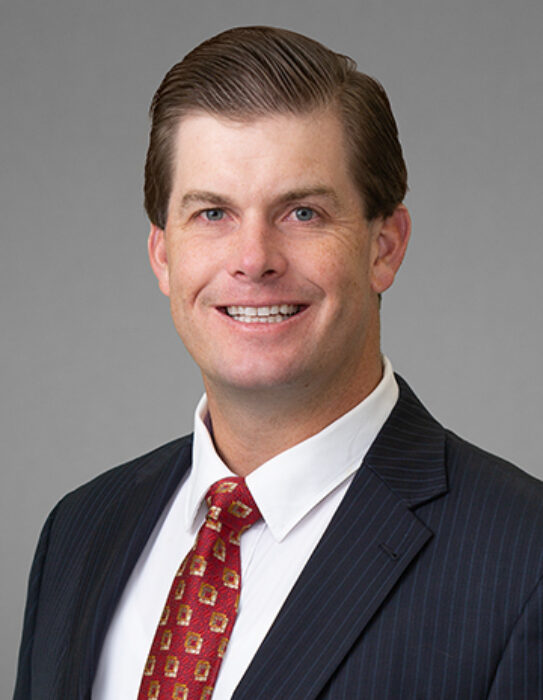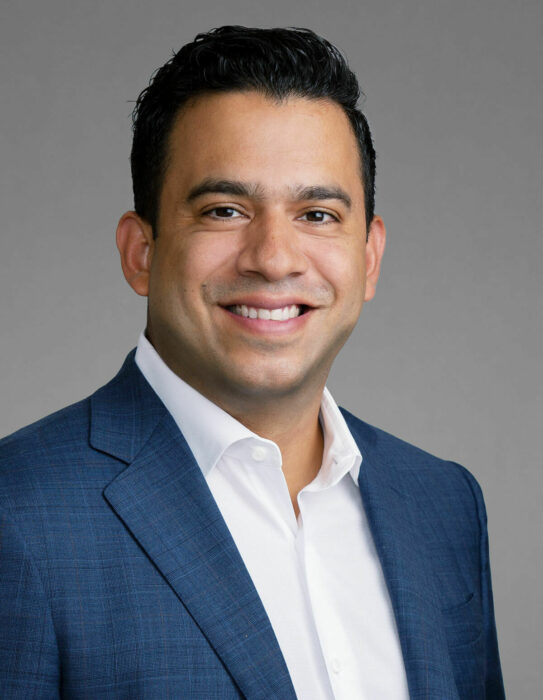Q&A: The State Of Oil & Gas M&A Activity & What To Expect In 2023

Read more to better understand the state of the oil and gas M&A and A&D landscape and what to expect in 2023.
The current landscape of M&A and A&D dealmaking in the U.S. oil and gas industry looks a lot different than what it did in the 2015-2019 period. During the pandemic, commodity prices sank to historically low levels (WTI crude oil futures went negative in April 2020).
Today, despite strong energy prices resulting from the post-pandemic economic recovery and a reshaping of global energy flows triggered by Russia’s invasion of Ukraine, oil and gas companies face new headwinds such as record-high inflation, rising recessionary risks, the energy transition, and concerns about oilfield cost inflation—all of which are having material impacts on how M&A and A&D deals get done.
Optimism continues to swell, however, that the increase in deal momentum experienced during the second half of 2022 will carry over into 2023. Upstream M&A and A&D deals reached a year-to-date high of more than $16 billion of transacted value during Q3 2022, according to Enverus. That was achieved despite continued volatility in oil and gas prices and oil and gas company stocks still missing market recognition.
Against this backdrop, Dan Kohl and Daniel Rojo, Co-Heads and Managing Directors of Opportune Partners, LLC, an independent investment banking and financial advisory affiliate of Opportune, offer their thoughts on how macroeconomic factors may be influencing M&A and A&D deals, how deals are evolving and on what terms, and what we can expect heading into 2023.
What’s your perspective on the broader global macroeconomic environment concerning commodity pricing and volatility and how it might be influencing how oil and gas M&A and A&D deals are being transacted?
Rojo: I’ll touch on a couple of things that are germane to our industry and impact the A&D market more broadly; specifically, interest rates and inflation. As interest rates continue to rise to fight inflation, the impact matriculates down to the A&D market through the overall cost of capital and the cost of underwriting acquisitions. As interest rates continue to increase, so does the cost of debt associated with capitalizing an acquisition, which has an inverse effect on valuations.
Secondly, what we’re hearing from clients is that there’s less capital availability on the debt side to help finance acquisitions, and as a result, some buyers are having to over-equitize acquisitions to get those deals closed.
On the inflation side of things, again, it all comes down to the cost of doing business. I’d say over the last 18 to 24 months, we’ve seen meaningful cost creep within the oilfield services sector.
Kohl: Anytime there’s major price volatility, either upwards or downwards, it has the effect of increasing the bid/ask spread across A&D transactions. One thing that’s notable about the current situation is the degree of backwardation in the strip price. This backwardation acts to create a bid/ask spread because a discounted cash flow (DCF) valuation, leveraging the backwardated strip, yields a cash flow multiple that is lower than historic NTM (next 12-month) multiples.
There’s also a general perception in the market that oil prices will remain fairly robust for the medium to long term, and many think it’s unlikely that prices in the $50/bbl to $60/bbl range, contemplated by the tail of the strip, will come to fruition. Buyers, particularly debt providers, are typically unable to underwrite anything more aggressive than strip prices, and sellers are looking at that backwardation and having trouble rationalizing divesting into the forecasted long-term price.
What’s the current state of the M&A and A&D market today? In other words, is now perceived to be a good time for owners to sell assets? Do certain types of owners see this as a good time to sell more than others?
Rojo: You’ve seen more mature, PDP [proved developed producing]-weighted, cash-flowing deals transact in this market. The reason that these types of deals are transacting and transacting efficiently is that number one, from a commodity price standpoint, compared with where we were 18 to 24 months ago, PDP-weighted assets can transact at relatively muted multiples and on an absolute dollar basis, you’re still transacting well above where you had those investments marked 18 to 24 months ago. Number two, just as the industry has continued to mature, you’ve seen pockets of capital emerge to warehouse those more mature and cash-flowing streams.
Kayne Anderson’s income fund is a great example. They were somewhat ahead of the curve raising dedicated capital and backing teams to pursue production-weighted acquisitions. You’ve also had some public strategies like Diversified Energy Company plc and Crescent Energy emerge that are chasing a similar thesis, although they do have flexibility in the budget for development, the thesis remains to buy more mature, predictable production.
On the opposite end of the spectrum for growth-weighted assets and inventory specifically, the quality of the inventory still very much matters despite the public rhetoric and certainly the investor focus on free cash flow and no-to-moderate growth Capex (capital expenditure) programs. What’s driving M&A and what’s driving A&D is the quality of the inventory. Recent examples include EQT/Tug Hill in Appalachia, Diamondback/Lario Permian in the Midland Basin, and Centennial and Colgate coming together in the Delaware Basin.
In all those instances, the common theme was inventory where you had access to tier-one rock and by association tier-one economics. Where we see a less efficient market is what I would call tier two or tier three inventory. I don’t use that as a way to necessarily distinguish bad deals but when you force rank rates of return across the Lower 48, buyers are still discerning in terms of tier one versus tier two and tier three, despite tier two and tier three rock capable of generating attractive rates of return today.
As a result, you get a lot of deals that are hung and potential sellers that decide they’re better off holding and drilling the inventory themselves, converting it to PDP, and reemerging with a package that’s much more PDP-weighted.
In your view, how does the free cash flow model that many companies have adopted square with the perception that undeveloped inventory may not attract value in the marketplace? Will some companies need to seek additional capital before they sell assets?
Kohl: Obviously, the free cash flow model dictates that an operator doesn’t outspend its cash flow. If one averages public companies across the spectrum, we see somewhere between 10%-25% of the capital being returned to investors via dividends, about 75-50% of the capital being invested (mostly through the drillbit), and the remaining 25% going into some form of debt paydown or stock buyback.
What this means is inventory is being developed at a slower pace. Overall, when you look at the inventory stack — your five-year, your 10-year plan –major operators don’t see necessarily an inventory crisis happening. So, when you look at a large public aggregator to acquire using a portion of that cash or even stock of another company, it’s got to compete with your existing inventory. That’s a challenge currently that sellers need to overcome and one that’ll get resolved as inventory continues to get depleted.
The other element is simply where returns are at right now. If you’ve got, call it 25% of your capital going back to shareholders and you can’t exceed your free cash flow, what are you going to do? Are you going to acquire a company with a full cycle return of 20%-30% with cash or are you going to drill your 70%-100% IRR [internal rate of return] locations? Operators are, particularly the large public companies, electing to use a greater percentage of stock, generally speaking. The Diamondback and Marathon transactions are an outlier in the last 10 major transactions concerning cash versus stock consideration. Everybody wants cash. They want that quick exit and it creates an interesting dynamic for those that have inventory or even those larger assets that are looking to tap a public exit.
Turning to the buy-side, what’s the approach buyers are taking when considering an A&D or M&A deal? In other words, what kinds of things are buyers on the lookout for?
Rojo: At a high level, coming out of 2020 and early 2021, buyers are certainly back in the market, albeit with a slightly different flavor. For strategics, they are actively looking to consolidate their respective basins. However, as discussed earlier, inventory and the quality of that inventory are going to be hypercritical as to whether or not they engage in specific situations. In the private domain, although the overall quantum of capital is lower than in years past, we’re hearing from sponsors that LPs [limited partnerships] are starting to come back around as evidenced by a few successful funds being raised in 2022 and several sponsors planning on hitting the road in 2023, which is great to see. How that capital is being put to work can take many forms from capitalizing a new acquisition to drill-cos, and structured debt and equity.
Kohl: I would say not just on the equity side, you’ve seen a lot of creativity on the debt side as well. It was four years ago we saw the first oil and gas securitization and we’re seeing many more operators turn to that as a source of liquidity for PDP-heavy assets. As the shale basins continue to mature, you’ve got to find a home for the vast amounts of production and obviously, you can hold in cash flow, but to the extent there is private equity looking to exit at the end of fund life, there are some mechanics whereby alternative debt solutions are coming more into vogue.
What trends are you seeing in terms of how A&D/M&A deals are being structured and executed? In other words, is there a greater degree of due diligence by brokers/investment banks now than there used to be in the past, the same, or more scrutiny? Is this reflected in the types of projects you’re working on today?
Rojo: It’s there if you know where to look. Now, all that said, as you might imagine, there are some nuances to the question beginning with the RBL [reserve-based lending] side of things. If you’re a producer that’s looking for, let’s say a $100 million to $200 million facility, it may be a little bit more difficult to put that syndicate together than it was a few years ago. And that’s simply a function of having fewer institutions that are lending to traditional energy.
On the private equity side, as mentioned previously, the dry powder in the system had come down from where it was five or six years ago when we identified upwards of $80 billion of private equity that was available and ready to be deployed. That number today I would say is closer to $20 billion to $30 billion.
What’s the outlook for the oil and gas M&A and A&D landscape heading into 2023?
Rojo: The market is certainly more subdued relative to the 100-plus deals that were historically characteristic of the A&D market. I suspect that the more subdued deal velocity is going to represent the status quo going forward.
Many of the catalysts that used to be prevalent in the A&D market are not as acute as they once were. As an example, with balance sheets much healthier, the need to sell a non-core asset to pay down debt isn’t as critical. And with the focus on free cash flow, multi-basin strategies have just as much traction as the “pure play” approach. In that context, assets become somewhat fungible. It comes down to capital efficiency and operating margins, which I think contribute to tempering the overall deal flow in the market.
The good news is that there is a willingness, there is an appetite, and there is depth to the buy side. I can tell you in some of the processes that we’ve encountered over the last year, there are healthy statistics in terms of participants, both on the public and the private side. There’s also been a healthy response from lenders looking to put capital to work and deploy their balance sheets in support of these acquisitions. In the near term, however, continued volatility, backwardation, inflation, and interest rates will create some obstacles to bridging the bid-ask spread. As markets continue to stabilize, it’ll make for a much more active market going forward.
Kohl: I would echo that and just say that there are fewer chess players on the board. You’ve seen a pretty material consolidation in terms of the number of companies over the last five years to a level where we’re at a 15-year all-time low (number of active operators). The barrels being produced are still there; they’re just concentrated by larger operators.
I think you’ll continue to see bolt-on transactions, aggregations, and mergers. Anytime that happens though there’s typically a shedding of non-core assets. Does the crystal ball say the volume goes up or down or more or less? I agree we’re going to trend along the current trajectory that we’re on and, barring oil running to $200/bbl, there’s no material catalyst that I see on the rise that would drive volumes back to 2014 levels.
About The Experts
Dan Kohl is Co-Head and Managing Director of Opportune Partners LLC, an independent investment banking and financial advisory affiliate of Opportune LLP. Daniel has over a decade of energy industry experience, having advised clients on over $10 billion in completed transactions over the last five years across every major basin in the U.S. Before Opportune, Daniel served as Head of A&D Advisory at UBS where he managed and directed all A&D and technical advisory efforts for the energy investment bank. Daniel began his career at Chevron where he worked in various technical roles throughout the U.S., with a focus on the Appalachian Basin shale plays. Daniel holds an M.S. from The Pennsylvania State University and a B.S. from Washington and Lee University. He is also a FINRA Series 79 and 63 registered representative.
Daniel Rojo is Co-Head and Managing Director with Opportune Partners LLC,, an independent investment banking and financial advisory affiliate of Opportune LLP. Daniel brings more than 15 years of energy investment banking experience, most recently as Managing Director and Head of Wells Fargo’s A&D practice. During his tenure with Wells Fargo, Daniel advised on more than $30 billion of transactions, spanning all major shale basins. Daniel holds an MBA and BA in Economics from Rice University. He is also a FINRA Series 79 and 63 registered representative.
Related Insights
Our experts are here
for you.
When you choose Opportune, you gain access to seasoned professionals who not only listen to your needs, but who will work hand in hand with you to achieve established goals. With a sense of urgency and a can-do mindset, we focus on taking the steps necessary to create a higher impact and achieve maximum results for your organization.
LeadershipGeneral Contact Form
Looking for expertise in the energy industry? We’ve got you covered.
Find out why the new landmark legislation should provide a much-needed boost for the development of carbon capture.




